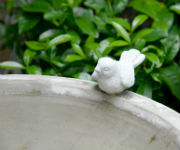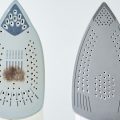
Rangemaster cleaning is always so much easier if you do it after each time you cook as regularly wiping down the oven and hob will prevent a build-up of grease and grime. Avoid using acidic cleaning products such as vinegar and limescale remover as these can damage the top glaze. Hot soapy water and a soft cloth will do the job perfectly!
Table of Contents
Rangemaster parts and how to clean them
Sides, floor, and roof of the oven
If you’re cleaning an enamel oven you should use a proprietary oven cleaner that’s suitable for this finish. Be careful not to come into contact with the oven elements or the door seal, and protect the burner in gas ovens with foil as you clean the interior of your oven.
Steaming the oven walls can simplify the cleaning process:
- Add some lemon juice or washing up liquid to 150ml of cold water.
- Set the oven temperature to 100 degrees.
- Place the bowl inside and leave for around 20 minutes.
- Steaming will loosen any burnt-on food residues.
- Let the oven cool and wipe down with a clean cloth.
Chrome oven shelves, handy-rack, grill trivet, handy-rack grill
Removing these oven parts before cleaning is the best way to get into all the hard to reach places. Use an interior cleaner that’s suitable for a chrome finish and follow the directions on the label carefully. Alternatively, you can use a small amount of washing liquid and some warm water:
- Dip a soft cloth into the warm soapy water.
- Wipe the grease and grime away.
- Use a soft toothbrush to get into nooks and crannies.
- Rinse with warm water to remove any soapy residue.
- Dry your chrome thoroughly.
Stay clean liners
Stay clean liners are special enamel components that clean themselves. This is how to clean catalytic oven liners:
- Brush off the worst of any food residues if liners are badly soiled.
- Turn your oven up to a temperature of 200 degrees or higher.
- Allow the liners to burn themselves off for around 30 minutes.
Carrying out catalytic oven cleaning at least four times a year will ensure that the life span of your stay clean liners will be about five to six years before they need to be replaced.
Pan supports, wok cradle, burner caps
Cast iron or enamel-coated pan supports are designed to last and should be washed by hand with a neutral detergent such as washing up liquid. To get rid of stubborn stains use a bristled brush to gently scrub and then rinse clean. Stainless steel pan supports can be cleaned in the dishwasher or in the sink with hot soapy water and a gentle scourer.
The wok cradle will get extremely hot when in use so you must allow plenty of time for it to cool down before you attempt to pick it up. Recommended cleaning materials include hot soapy water, cream cleaners, and a nylon scourer that can be gently used to remove dried-on food stains.
Burner caps can be washed in warm soapy water and dried thoroughly before being replaced. Check that the burner head is level and that the cap is fitted back centrally onto the burner head.
Hob/hotplate top and door surround
Stainless steel and enamel hobs are best cleaned with hot soapy water and a soft cloth. Remember that abrasive cleaning products may mark the hob and must be avoided, so stick to a plastic spatula to remove stubborn bits of food and finish off with a cream cleanser. After rinsing use a kitchen towel to soak up excess moisture. Stainless steel can be buffed up with an E cloth for a shiny finish.
If your oven door surround is enamel or paint finish, cleaning with hot soapy water and a soft cloth is ideal. Any stubborn stains can be removed with a little additional washing up liquid. For stainless steel finishes, you can opt for recommended cleaning cloths such as Vileda Microfibre Plus All Purpose cloths to give great results.
Door and storage drawer exterior
Cleaning your Rangemaster enamel or stainless steel oven door and the outside of the storage drawer can be done in four simple steps:
- Use hot soapy water and a soft cloth to wipe over.
- Remove stubborn stains with a plastic spatula.
- Follow up with a cream cleanser if needed.
- Buff up stainless steel with an E cloth.
Splashback/rear grill slots
For enamel finishes, the splashback should be cleaned with a soft cloth and warm soapy water, using a cream cleanser if necessary.
Stainless steel finishes can be cleaned by:
- Spraying distilled vinegar over the splashback.
- Wiping with paper towels.
- Use a tiny amount of olive oil and a lint-free cloth to rub up a shine!
Or you can make a paste of soda bicarbonate and water and apply it to the areas that need cleaning. Leave for 30 minutes before wiping clean with a damp cloth, and wipe dry to stop watermarks from forming.
Grill slots can be cleaned carefully with the same materials.
Sides and plinth
If your oven has a painted surface on the sides and plinth then hot soapy water and a clean cloth are the only tools you’ll need!
Oven door glass, glass lid and warming zone
Follow these easy steps to clean toughened glass without scratching:
- Mix equal amounts of water and a mild washing up liquid and transfer to a spray bottle.
- Spray on the solution and wait for 10-15 seconds for it to penetrate.
- Dampen a soft sponge and begin to wipe away the solution starting from the top and working your way down.
- Use a microfibre cloth to buff the glass until it’s dry.
Burner trim rings and burner heads
Cleaning gas stove burner heads is straightforward. If your model has a separate aluminium trim ring that fits on the burner head they can both be removed for cleaning.
How to clean gas burners:
- Soak them in warm soapy water for about half an hour.
- Use a cream cleanser to gently remove stubborn stains with an old toothbrush.
- You can clear any blocked openings in your cooker rings carefully with a paper clip.
- Dry thoroughly with a clean microfibre cloth.
Grill pan/ meat tin, handy grill pan
Clean these enamel parts by firstly allowing them to cool completely. Then you can hand wash with warm soapy water and a soft sponge. For stubborn stains, you can make a paste of hot water and salt and gently scrub the affected areas before rinsing and drying.
Other household standby recipes include lemon and water. Cut the lemon into small pieces and add boiling water, then wait for the mix to cool and then use it to gently scrub away grease and grime. And remember baking soda is an ideal way to clean enamel without scratching.
Control knobs/handles
Plastic and chrome knobs should only be cleaned with a soft cloth and clean hot soapy water but remember that the cloth must be wrung out to avoid any surplus water seeping into your oven. Wipe with a clean dampened cloth before giving a final polish with a clean dry cloth.
Alternatively, you could use a mild glass cleaner but never spray the cleaner directly onto the control panel, spray onto a cloth and apply to the area, and then buff with a dry, clean soft cloth.
Griddle plate
Your non-stick surface griddle plate will benefit from cleaning immediately with hot soapy water. You can then remove cooked-on grime with a baking soda, water, and olive oil solution mixed to resemble the consistency of toothpaste. Apply and leave to sit before thoroughly rinsing and drying.
Applying olive oil as part of re-seasoning will ensure the griddle plate lasts longer.
Fascia
Your enamel or stainless steel fascia doesn’t need cleaning with abrasive cleaners of any description. Warm soapy water will do the job quite adequately combined with quality microfibre cloths for wiping down and drying.
Cooker hood
A stainless steel cooker hood should be cleaned with a clean soft sponge or cloth. You can use a recommended cream cleanser and follow the directions on the label, before wiping off the product with a clean cloth to avoid smearing. Sticky residues in awkward corners can be removed with a soft-bristled toothbrush.
Painted surfaces can also benefit from cleaning with a paste of baking soda and white vinegar which can be gently scrubbed onto the affected areas before rinsing and drying thoroughly.
Ceramic or induction hob
Your ceramic or glass hob with plastic surround can be cleaned as follows:
- Remove any food remnants with a ceramic scraper.
- Apply a small amount of ceramic-compatible cleaning fluid.
- Leave for a couple of minutes.
- Use a microfibre cloth to wipe away stains.
If you’ve got an induction hob use a cleaner designed for this purpose. Here’s how to clean electric hob rings:
- Wipe off loose food particles.
- Apply a small amount of hob cleaner to a damp soft sponge or cloth.
- Use a clean microfiber cloth to wipe away moisture and buff dry.
- Spray glass cooker top covers with a glass cleaner for that extra shine.
The self-clean option
A self-cleaning range oven lets you keep your oven clean without you having to do all the hard work! You simply;
- Empty the oven of all removable parts.
- Set the self-cleaning cycle.
- Allow the oven to cool down.
- Remove the ash from the bottom of the oven.
- Wipe out any residue.
Booking Fantastic Cleaner’s range cooker cleaning service ensures that your appliance will get the care it needs, leading to a squeaky-clean cooker with improved performance. All the used cleaning solutions are child and pet-friendly with a dip-tank cleaning technique that guarantees perfect results.
Takeaways
A few key things to remember from the blog post are:
- Wipe down your oven and hob after every use before any food spillages can be burnt on.
- Avoid using any abrasives or scourers as they will damage finishes.
- Add shine with white vinegar that’s a natural degreaser.
- Apply olive oil to your griddle pan to ensure it won’t rust and stays in good condition for longer.
- Never run the self-cleaning cycle when you’re not at home due to the intense heat required and always keep the kitchen well-ventilated during the cycle.
Do you need your Rangemaster cooker thoroughly cleaned?
Enter your postcode to view our rates and availability in your area.
For questions about the services we offer visit our main site
How do you clean your Rangemaster cooker? Let us know in the comments. We would love to hear from you!
Image source: Shutterstock / KoKa Photo









Leave a Reply